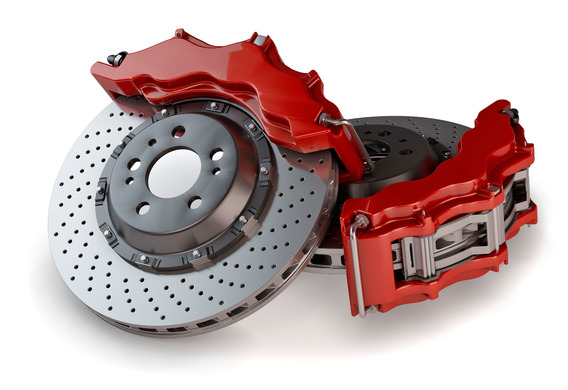
There are two groups of secondary systems: Brake Assist System (BAS), or emergency braking system, and Advanced Emergency Braking System. BAS is somewhat simpler: it adds an effort to help the driver to use the maximum resource of the braking system. A common case: the driver could not push the brake pedal until the thrust (no effort or rolled up the bottle), the brake did not work for 100. If the emergency braking system was used, the electronics would have calculated the required force and added it automatically.
The automatic braking system shall be activated without the driver's participation. Elektroka "understands" at what point it is necessary to intervene, receiving data from a set of sensors installed in a car.
History of appearance
The emergency braking system, brake assist and other vehicle brakes are supplements to the anti-lock system. They began to be introduced in 1970, and the Chrysler car became the first mover. To date, the situation has changed fundamentally.
If earlier such options were only available for expensive executive classes, then such systems are now attempting to make them mandatory for all classes. The Euro NCAP Committee published a report on the distribution of Advanced Emergency Braking Systems (AEB) on modern vehicles. Since 2014, the availability of such a device on the vehicle will become a mandatory condition for the maximum assessment of five stars. This innovation is the first step on the road to the automobile revolution.
It is likely that, over time, such systems will be a mandatory requirement for the production of the model in serial production. It is difficult to judge how soon it will happen, but with each year the number of vehicles equipped with auxiliary systems is rapidly increasing. Already now they are available on Chevrolet Aveo and Ford Focus, the cost of which varies between $500,000 and $1 million. -Ruble. Previously, this could only allow the Mercedes and Volvo of the executive class.
How it works
The emergency braking system (BAS) is operated with both air and hydraulic braking systems. Measuring instruments are used to recognize the situation and are fitted to the whole vehicle:
-speed sensor of the wheels;
-Vacuum amplifier speed sensor (instrument which records with which force the brake pedal);
-a liquid pressure sensor in the braking system (same as for vacuum amplifier currents, but this is applied to the hydraulic braking system);
In the case of the liquid brake system, the BAS controls the pressure of the liquid. The hydraulic system is arranged in such a way that the braking mechanism is controlled by a hydraulic transmission device. The brake pedal shall force the force from the driver's foot to the brake cylinder filled with fluid. Due to the pressure created by the liquid, the piston is moving and forces the brake mechanism to contract. The emergency braking system controls the pressure of the liquid in the cylinders, thereby adding the brake force if necessary.
Systems of this type are divided into groups. They are distinguished by the number of sensors on which their work is based. The most advanced are installed on BMW and Mercedes-Benz. Such systems take many factors into account: the brake pedal force, the quality of the road surface, the direction of traffic and the control of the distance ahead of the car.
If the brake system is operated with a pneumatic transmission, the pressure shall be controlled by the compressed air. It moves the piston (vacuum amplifier (s)), thereby increasing the braking force. The emergency braking system controls the air pressure to control the movement of the piston.
The emergency braking system is operated in a pair with the ABS system.
ABS and BAS are assisted by an emergency braking system. Its main difference is that it itself applies braking if the data from the sensors indicate the hazard. The system uses radars that calculate the distance ahead of the car. If the radar data shows an intense distance reduction, the system itself applies braking. The control of the brake system based on the BAS principle is realized-the pressure in the brake cylinders is increased.
Cars equipped with such electronics are recognized as a reference for safe movement. Even if the collision occurs, the consequences may be less tragic, as the automatics will minimize the speed. Movement conditions are now forcing producers to pay attention to security. Low driving culture, lack of experience affects the road environment. Every year there are more newcomers on the roads who are unsure of which can lead to an accident. It is for this group of drivers that the use of a car equipped with emergency braking systems is particularly relevant.







